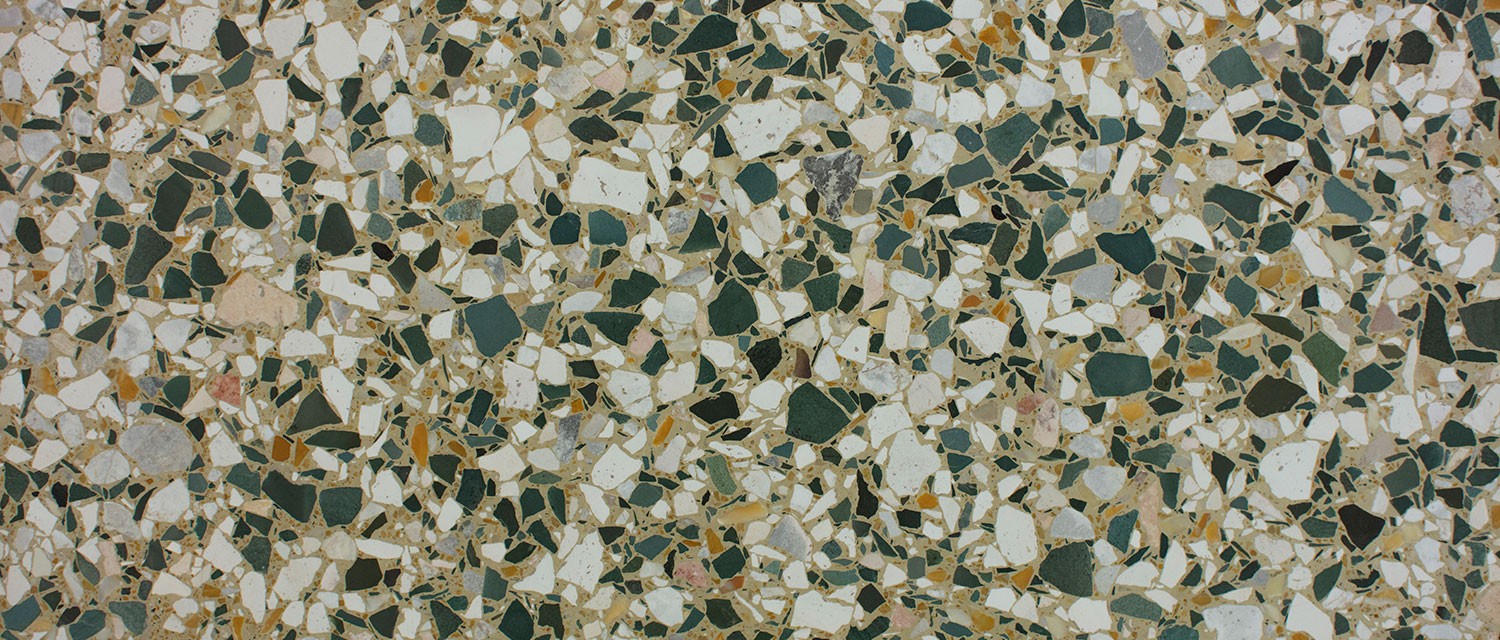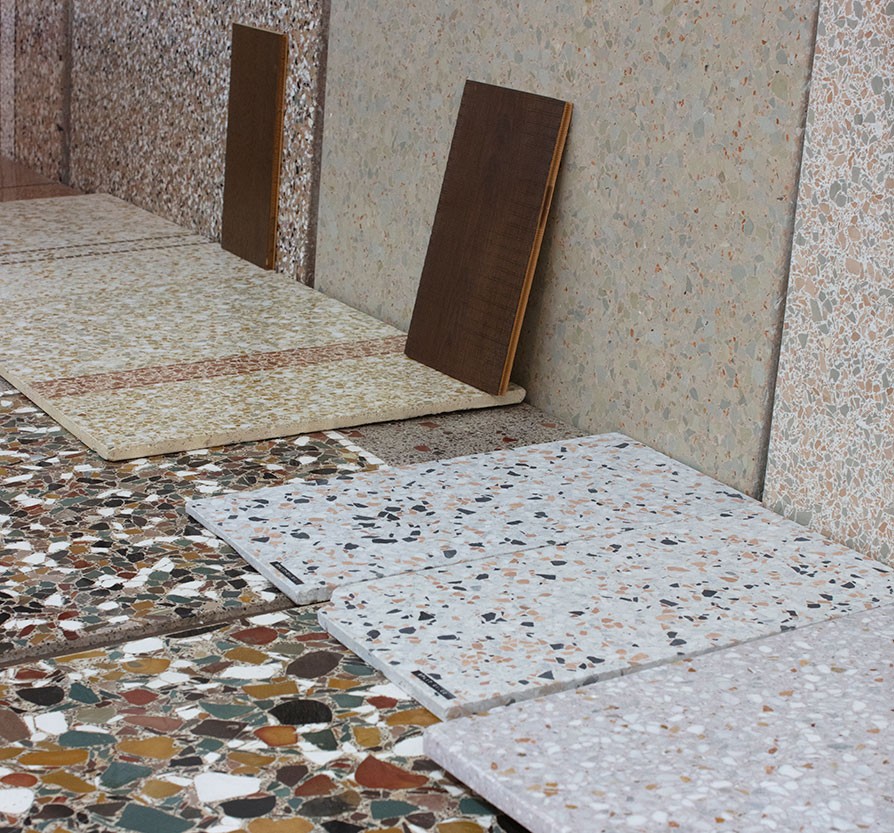Crafts and wine: a toast together with the Zanchettin laboratory
Crafts and wine: a toast together with the Zanchettin laboratory

A floor can have an artistic dimension and even a family history of those who laid it. In a nutshell, this is the feeling you get inside the Zanchettin lab, a place where the craftsmanship of Venetian pavement tells about hands whitened with lime, bent-over backs and eyes that can foresee spaces and colours before they are even there. Here in Revine Lago, the expertise and know-how are passed down from father to son, like in many other companies from the Treviso province: “The business started out with my father’s passion. Currently, my brother Christian and my son Alex are working in the company. We all got stuck in it” jokes Adriano.
What is a Venetian pavement?
It’s an ancient, Venetian processing technique obtained by laying down rocks of different sizes, aggregating them with binding material, grinding and polishing them to become a sort of mosaic. Some rocks trace back to the Carthaginian civilisation, but the biggest evolution happened with the Republic of Venice. In fact, the Venetian pavement used to involve local ground materials, which is why they vary from city to city. The rocks for the lime were caught from the Piave and Tagliamento rivers. During the first cooking stage the rock turns white, then it melts into becoming lime. The waste material - which did turn white without becoming lime - was used to make white floors. There were also the green rock from the Piave river and the yellow Conegliano. In Venice, the comings and goings of the harbor would make the Istrian yellow, the Carrara white, the Asiago red and the Verona shade available too. At first, the binding material was lime, which - at the beginning of the twentieth century - was replaced by concrete.
It’s a long procedure that leads to unique outcomes.
Lime has a slower grip than concrete, therefore allowing better decorations, but the final product remains unique, because it’s molded onsite. The artisan starts from the idea, but is influenced by the environment.
There is a strong artistic component, isn’t there?
On the one hand, once you’ve learned the different process phases, the work becomes almost automatic; on the other hand, there are some big challenges involving the artistic component: when the client gives you the drawing, you have to figure out first whether it’ll make sense once it’s laid. It’s up to the artisan to interpret the draft and, when possible, to make it better.
Material processing is intrinsically connected with the territory. How important is it to be born here and not elsewhere?
The Venetian pavement was born here, so I can compare my work with the one of other experts like me. Exchanging views is critical: never believe to be the best if you want to keep improving.
Production, besides expertise and talent requires big efforts.
Of course. It’s a hard work which cannot be outsourced easily.

What is the main quality of an artisan specilised in Venetian pavements?
It’s having a good back. Moreover, you have to be passionate about the result. Expertise is a distinguishing element, because you can only understand a product once is finished. One thing is dealing with a sample, another is the result on large-scale. The final result, the detail is everything. The client doesn’t always understand the difference with a smoothed concrete, a mass product; therefore, the quality of this product needs to be explained.
Do you start from a drawning, an idea or does the pavement take shape throughout the process?
It depends on the construction site and the way the whole process is handled. Clients usually come to us asking for suggestions. Compared to fifty years ago, when each room served a different scope and had their own pavement, today’s rooms are much more open spaced; therefore, I always suggest to avoid any decorations, in order for the room to be used for multiple needs.
Does it happen often to upset the initial idea of the client?
Yes, it does, and not always to my advantage. However, if a client wants something that I believe doesn’t fit with the context, I’d talk some sense into him and suggest going for something simpler. The final result won’t be less beautiful though; sometimes it’s surprising to see how much good there is in simplicity. The client’s satisfaction is one of the most important thing, because the word-of-mouth works only if you managed to interpret the clients needs - even the most hidden ones.
What is typical from Veneto in your works? And what is it universally appreciated?
Raw material is fundamental, but you can find them almost everywhere in Italy. The real difference is the rooted (not improvised) culture of processing.
Let’s uncork a bottle of fine sparkling wine on an elegant Venetian floor. What would you like to toast to?
I’d like to toast to my network of contacts, to tell them that here we have everything we want and wine is only the cherry on top of the cake. I’d like to toast to all the people who make this territory unique.


